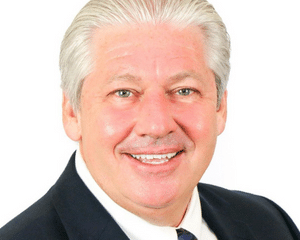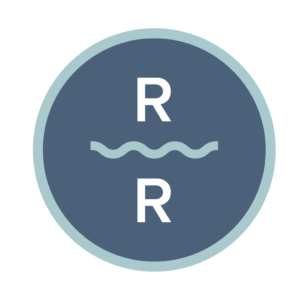Medication-Assisted Treatment for Substance Use Disorder

Medication-Assisted Treatment or MAT uses medication along with behavioral therapy to treat alcohol and drug use disorders. MAT programs are tailored to each person’s needs in addiction recovery programs at Riverside Recovery of Tampa. Further, this approach has particular value in physical addictions, including alcohol, prescription painkillers (opioids), and heroin.
MAT combined with other therapies achieves numerous results, including:
- Alleviates withdrawal symptoms associated with detox
- Suppresses cravings in early recovery
- Eliminates the ability to achieve a high.
- Triggers adverse effects when an illicit substance is used
Group counseling based on a 12-step program and individual talk therapies such as cognitive behavioral therapy can help clients understand the root of their unhealthy relationship with drugs and alcohol. It helps most when combined with a personal approach to treatment.
Medication-Assisted Treatment for Opioid Addiction
Opioid addiction is a growing problem despite efforts to stem the tide of overdose injuries and deaths. Between April 2020 and April 2021, approximately 76,000 people died of opioid overdoses, according to the Centers for Disease control. Compare that to 56,000 from the year before and it’s obvious that the crisis continues. Further, between 50% and 80% of babies exposed to opioids during pregnancy develop neonatal abstinence syndrome or NAS.
These statistics underscore the importance of evidence-based programs such as MAT. The long-term success of relapse prevention improves when providers include medically assisted treatment during detox and recovery. Because it addresses the neurobiological changes brought on by addiction, MAT plays an important role in a treatment program that focuses on health and well-being, according to the Substance Abuse and Mental Health Services Administration. When used correctly, MAT can reduce the discomfort of cravings and withdrawal symptoms and block the euphoric effects of opioids.
MAT Medications for Opioid Addiction
Opioids are highly addictive, but there are medications that may remove some of the obstacles to overcoming opioid use disorder. How does MAT treatment work? Methadone and buprenorphine reduce cravings and withdrawal symptoms. Naltrexone and similar medications interfere with the pleasurable effects of illicit opioid use. As a result, these medications dramatically improve the success rates of opioid recovery programs.
Methadone
Methadone, a mild opioid, is commonly used in MAT programs to ease the discomfort of opioid withdrawal. Medical professionals use minimal doses to stabilize clients so they can focus on recovery. Available in pill, wafer, and liquid form, methadone effects last up to eight hours. A typical regimen lasts for 12 months and requires gradual tapering of the dosage to prevent withdrawal symptoms.
Buprenorphine
Buprenorphine also helps suppress cravings and the effects of opioids. Known as an opioid partial agonist, buprenorphine produces respiratory depression and mild euphoria. The effect doesn’t increase with higher dosages, which increases the safety of using it in a recovery program. Typically, medical personnel administers buprenorphine within 24 hours of the last opioid use.
Common forms of buprenorphine include:
- Subutex tablets: This chemically pure form of buprenorphine has great potential in a MAT program. However, increased doses carry the potential for addiction, especially when injected.
- Suboxone tablets: This medication contains buprenorphine and naloxone, both of which help block opioid receptor sites in the brain. High doses trigger intense withdrawal symptoms.
- Probuphine: Medical professionals install an implant that administers Probuphine over six months. Clients don’t have to take it every day and it can reduce the potential for relapse.
- Injectable Buprenorphine: This option works similarly to other options but comes in the convenient form of a monthly injection. The delivery method helps prevent addiction to buprenorphine tablet formats. The injections begin the following detox when the client has stabilized, typically within seven days.
Naltrexone
Naltrexone also suppresses cravings but works a bit differently. Methadone and buprenorphine activate opioid receptors, while naltrexone binds to them, blocking the ability to achieve a euphoric effect from opioid use. It effectively eliminates the potential for abuse. However, administration can only begin after all withdrawal symptoms subside. As one of the most versatile medications, it’s available via a pill (ReVia and Deparde) or injection (extended-release Vivitrol).
Begin Recovery
Opioid Overdose Medication
Taking opioids other than those directed on a prescription or consuming them illicitly can lead to negative health consequences, including overdose and death. Overdoses also occur when opioids are taken with other psychoactive drugs. Due to the potential risks, MAT programs for opioid use disorder provide access to drugs that can reverse the symptoms of an overdose. Naloxone is one of the main drugs used for opioid overdose reversal.
Naloxone (Narcan)
Naloxone goes under the brand name of Narcan, and it reverses the negative effects of opioid overdoses. It is administered via an intranasal spray or injection. This medication binds opioid receptors to prevent additional activation and can take effect within minutes. Often, this gives first responders time to reach a treatment facility. In the event of an overdose, family, friends, and medical professionals can administer Naloxone.
Medications for Alcohol Abuse
Alcohol addiction is one of the most difficult substance use disorders to overcome. It’s legal and readily available at any liquor store or bar. Additionally, alcohol withdrawal may include serious physical symptoms such as seizures or delirium tremens. According to SAMHSA, MAT programs, used in conjunction with talk therapy, can improve outcomes in alcohol addiction recovery.
Some of the common MAT medications for alcohol include naltrexone, disulfiram, and acamprosate.
Disulfiram
Disulfiram tablets are effective following detox. Individuals take them once a day and they produce the following symptoms with even small amounts of alcohol:
- Nausea
- Headache
- Respiratory distress
- Chest pains
- Vomiting
Some recovery centers avoid disulfiram due to the potential dangers of side effects.
Naltrexone
Naltrexone is also effective in MAT programs for alcohol. It blocks the pleasant feelings associated with consuming alcohol, which may alleviate cravings.
Acamprosate
MAT programs can also use acamprosate following the initial phase of withdrawal. Treatment begins as early as the fifth day after the client stops consuming alcohol. It reaches full effect within eight days and involves taking three tablets per day. As with other MAT medications, it’s best used in combination with other recovery treatment methods, such as group and individual therapy.
Pros and Cons of Medication-Assisted Treatment
MAT has pros and cons like every other substance use disorder treatment approach. Due to its ability to decrease withdrawal symptoms and reduce cravings, it has great potential in drug and alcohol addiction treatment. For example, MAT may decrease the chance of an overdose and make it easier for clients to stay on track with their recovery.
On the other hand, MAT has its fair share of challenges that include stigma for participating in a program, the inconvenience of daily dosing, and the potential for abuse with some medications. However, it’s an important part of many effective treatment programs.
How Riverside Recovery of Tampa Uses MAT
At Riverside Recovery of Tampa, we offer a wide range of treatment options, including medication-assisted treatment. Clients receive MAT with alcohol and opioid use disorders, and medications used include naltrexone, buprenorphine, acamprosate, and disulfiram.
Clients receive comprehensive treatment at Riverside Recovery of Tampa. Some of our methodologies include individual group counseling, dialectical behavioral therapy (DBT), cognitive-behavioral therapy (CBT), and recreational therapy.
Contact us today to discuss how MAT and other proven treatment plans can help you maintain sobriety and clean living for a lifetime.
Substance Abuse and Mental Health Services Administration (SAMHSA)–Medicated-Assisted Treatment (MAT) Can Improve Health Outcomes
Pew Charitable Trusts–Medication-Assisted Treatment Improves Outcomes for Patients With Opioid Use Disorder
American Family Physician–Neonatal Abstinence Syndrome: A Call for Mother-Infant Dyad Treatment Approach
- Centers for Disease Control and Prevention– Drug Overdose Deaths in the U.S. Top 100,000 Annually
